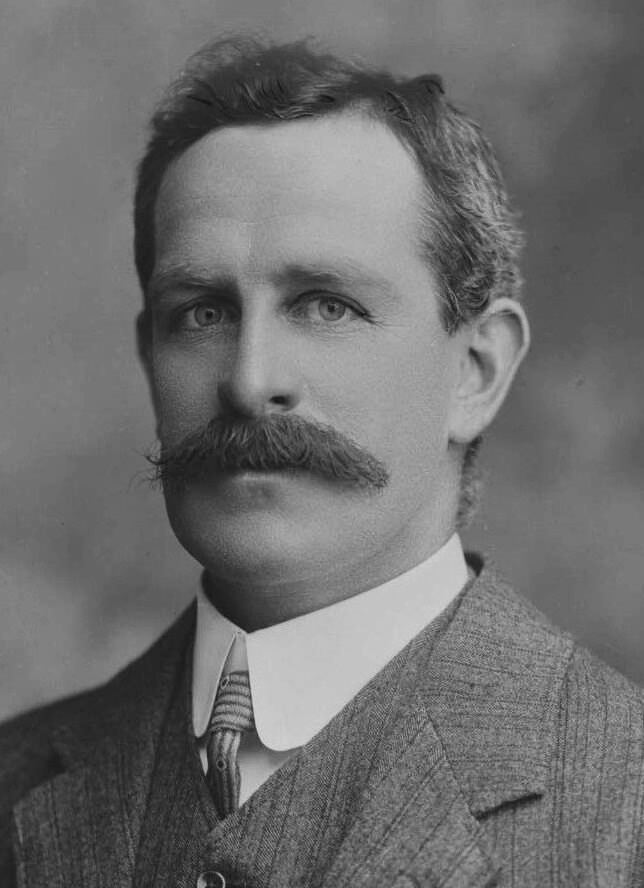Role Australian Politician | Name Frank Tudor Deputy Albert Gardiner Preceded by Seat created | |
 | ||
Died January 10, 1922, Richmond, Australia | ||
Experts discuss China's influence on Australian households
Francis Gwynne "Frank" Tudor (29 January 1866 – 10 January 1922) was an Australian politician who served as the leader of the Australian Labor Party from 1916 until his death. He had previously been a cabinet minister under Andrew Fisher and Billy Hughes.
Contents
- Experts discuss Chinas influence on Australian households
- Frank Tudor CEO Horizon Power The meaning of change
- Early life
- Entry into politics
- Leader of the Opposition
- Death
- References

Tudor was born in Melbourne to Welsh immigrant parents. He attended local state schools, but left at a young age to enter the workforce. He became involved in the felt hat industry, serving an apprenticeship at a large factory in Australia and then living for periods in England and the United States to better learn the trade. Tudor became involved in trade unionism in England, and after returning to Australia served as president of the Felt Hatters' Union. He was later elected to the Victorian Trades Hall Council, and in 1900 became president.
In 1901, Tudor was elected to the new federal parliament as a representative of the Labor Party. He was chosen as the parliamentary party's first whip, and held that position until entering cabinet in 1908. Tudor served as Minister for Trade and Customs from 1908 to 1909, 1910 to 1913, and 1914 to 1916, as Labor governments rose and fell. He sided with the anti-conscriptionists during the Labor Party split of 1916, and became party leader (and thus leader of the opposition) following Billy Hughes' expulsion. Tudor led Labor to the 1917 and 1919 federal elections, on both occasions suffering heavy defeats.
Tudor's death in office at the age of 55 came after a long period of ill health. He was the first leader of a major Australian political party to die in office, and was accorded a state funeral.
Frank Tudor, CEO Horizon Power - The meaning of change
Early life
Tudor was born to John Llewellyn Tudor, a ballastman, and Ellen Charlotte Tudor, née Burt, both of Welsh origin, on 29 January 1866 at Williamstown, Victoria. However, the family soon moved to the Melbourne suburb of Richmond, where Tudor lived most of his life.
Upon leaving Richmond Central State School, and after short spells in a sawmill and a boot factory, Tudor entered the felt hat industry. Tudor apprenticed in Abbotsford and then travelled across Victoria in the hat trade. Tudor went to England, working in London, Birmingham, Liverpool and Manchester, marrying Alice Smale in Denton, Lancashire in 1894. Smale died the same year, but Tudor continued in the felt hat trade by moving to London and becoming vice-president of the local branch of the Felt Hatters' Union. In 1897 Tudor remarried to Fanny Jane Mead.
As vice-president of the union Tudor became interested in union politics (as many Labor politicians were before their entry into politics) and persuaded the British unions to adopt the union label principle. Returning to Australia, Tudor worked at Abbotsford's mills and took a seat in the Victorian Trades Hall Council. In 1900 he became president.
Entry into politics
A prominent figure in Richmond, Victoria, Tudor turned the Division of Yarra into the safest Labor seat in the country by winning that seat by a large margin in the 1901 federal election. Tudor was a deacon of the Congregational Church and angered some Protestants with his calls for Home Rule for Ireland.
Tudor was immediately elected the Labor Party's whip and assistant secretary. He ascended to the position of secretary in 1904, then Minister for Trade and Customs during the three Fisher ministries, from 1908–1909, 1910–1913, 1914–1915. When Billy Hughes replaced Andrew Fisher as the Prime Minister, Tudor continued in the role of Minister for Trade and Customs until 1916, when he resigned from the Hughes ministry over his opposition to conscription.
Leader of the Opposition
Hughes left the Labor Party at the end of 1916 due to his support for World War I conscription in Australia, a policy that ran counter to Labor policy. He took 24 pro-conscription Labor MPs with him to form the National Labor Party, which merged with the Commonwealth Liberal Party later in the year to form the Nationalist Party. Tudor was elected as the new leader of the Labor Party, and consequently became Leader of the Opposition as Hughes was able to stay in office as Prime Minister. Tudor led his party to a severe defeat in the 1917 federal election. The party was severely weakened by several of its early leaders following Hughes out of the party.
Hughes proved to be a popular wartime leader, and Tudor was never able to get the better of him. In 1919, T. J. Ryan, who since 1915 had been Premier of Queensland, was transferred to federal politics to serve under Tudor as a deputy. At the election later that year, Tudor led the ALP to a second heavy election loss. Tudor was increasingly seen as an ineffectual leader, and several elements were contemplating replacing him with Ryan. However, Ryan's early death in 1921 prevented him from taking Tudor's place. Tudor's own health became markedly worse during 1921. He was increasingly unable to carry out his duties.
Death
On 10 January 1922, Tudor died, aged 55. He was the first leader of the Labor Party to die in office, and the first Opposition Leader never to become Prime Minister. He was succeeded as the member for Yarra by future Prime Minister James Scullin.
Tudor's estate was valued at £4,629, around half of which was real estate. His widow went bankrupt within the year, after her brother's firm (in which she had invested most of her money) went broke.
